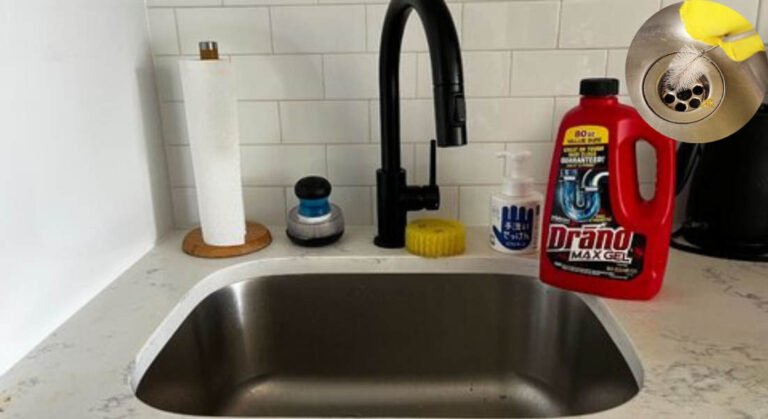If you’ve ever dealt with a clogged kitchen sink, you know how frustrating it can be. Slow-draining water, unpleasant odors, and the inconvenience of a blocked sink can bring your kitchen activities to a halt. Thankfully, Drano, one of the most popular chemical drain cleaners, offers a quick solution. But can you use Drano in your house kitchen sink safely and effectively.
Understanding Drano and Its Use in Kitchen Sinks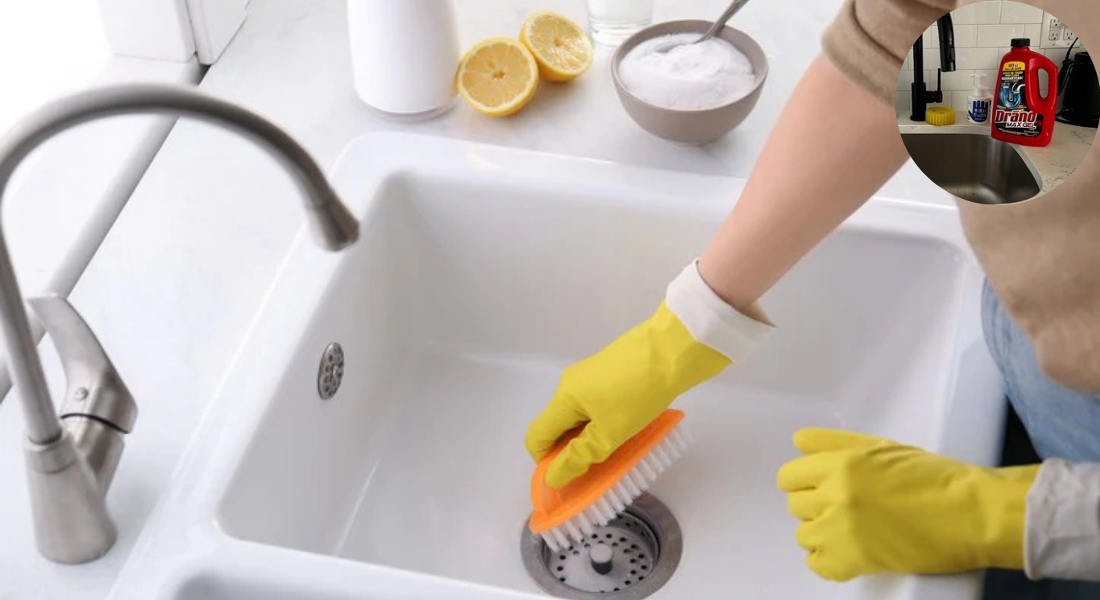
What is Drano?
Drano is a powerful chemical drain cleaner designed to dissolve clogs caused by grease, food particles, hair, and other debris. It contains a blend of sodium hydroxide (lye), bleach, and aluminum, which work together to break down blockages. The combination of these chemicals produces heat, which helps disintegrate organic materials stuck in pipes.
Drano comes in various forms, each tailored to specific needs:
- Liquid Drano: Ideal for general clogs in sinks and bathtubs.
- Drano Max Gel: A thicker gel designed for tough clogs and slow-draining pipes.
- Drano Crystals: Granules that dissolve in water, creating heat to tackle grease-based clogs.
- Drano Foamer: A product that fills the entire pipe with foam, ensuring more thorough coverage.
How Does Drano Work?
When Drano is poured into a clogged drain, its chemical components activate to break down organic materials, such as grease and food residue. Sodium hydroxide reacts with water to produce heat, which helps dissolve stubborn clogs. Meanwhile, the bleach sanitizes and deodorizes the drain, leaving it clean and odor-free after flushing.
Drano generally requires 15-30 minutes to work before flushing the drain with hot water. However, tough clogs may require a second application.
Is Drano Safe for Kitchen Sinks?
Drano is safe for most modern kitchen plumbing, including PVC and metal pipes, as long as it’s used according to the manufacturer’s instructions. However, there are some limitations to keep in mind:
- Not for aluminum pipes: The heat generated by Drano can damage aluminum plumbing.
- Avoid use on old or corroded pipes: Older plumbing may not withstand the chemical reaction.
- Garbage disposals: Drano can be used with garbage disposals, but only with proper precautions (more on this later).
- Septic systems: Drano is septic-safe, but frequent use might disrupt the natural bacterial balance in your septic tank.
Step-by-Step Guide: How to Use Drano in Your Kitchen Sink
Using Drano properly is crucial to ensure your safety and the longevity of your plumbing. Follow these steps to tackle your clogged kitchen sink.
Preparation
Before applying Drano, take the following precautions:
- Protective gear: Wear gloves, goggles, and a mask to prevent skin and eye contact or inhalation of fumes.
- Ventilation: Open windows or turn on a fan to minimize exposure to chemical fumes.
- Clear the area: Remove dishes, utensils, and any items around the sink.
- Check your plumbing: Avoid using Drano on incompatible pipes, such as those made of aluminum or those with heavy corrosion.
Application Process
- Read the instructions: Carefully read the product label to understand the recommended amount and application process. Different Drano products may have slightly different instructions.
- Pour Drano: Pour the recommended amount of Drano directly into the drain. Do not dilute it with water unless directed.
- Wait: Allow the product to sit for 15-30 minutes. This gives the chemicals time to break down the clog.
- Avoid using a plunger: Do not use a plunger while the product is in the drain; this can cause splashing and exposure to harmful chemicals.
Post-Application
After the waiting period:
- Flush with hot water: Run hot water for several minutes to rinse away the chemicals and debris.
- Repeat as necessary: If the clog persists, repeat the process. However, avoid overusing Drano, as excessive use can damage pipes.
Special Considerations for Garbage Disposal Sinks
If your kitchen sink has a garbage disposal, follow these extra precautions:
- Turn off the power: Disconnect the garbage disposal to prevent accidents.
- Remove standing water: Ensure the disposal and drain are free of excess water.
- Flush after use: After applying and flushing Drano, run the disposal with water to clear any residue.
Safety Precautions and Potential Risks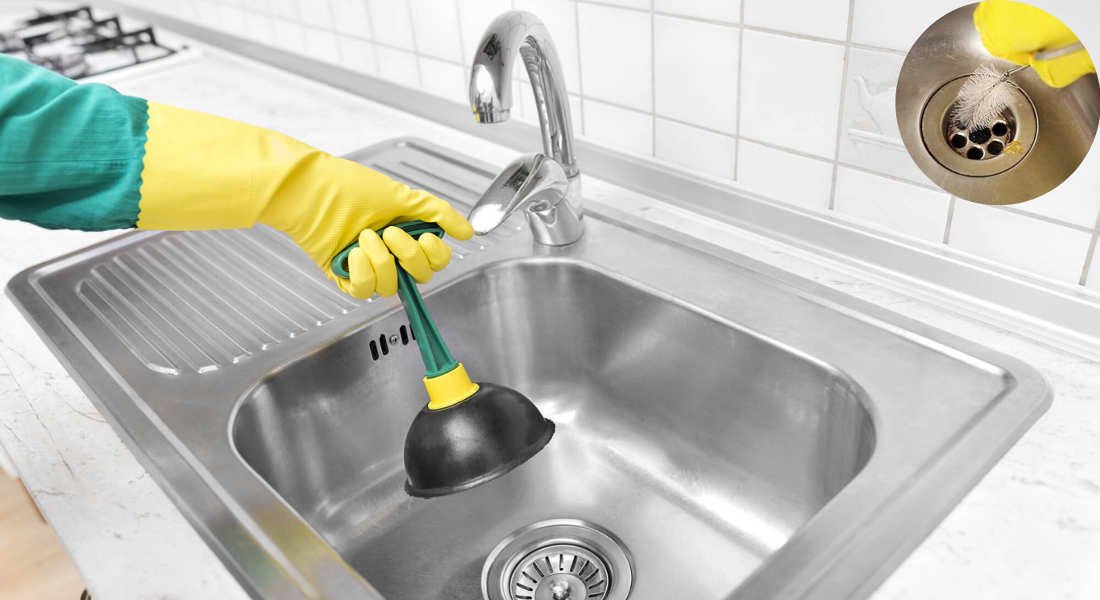
While Drano is effective, it’s a potent chemical that requires careful handling. Let’s discuss the risks and how to mitigate them.
Health and Safety Risks
- Chemical burns: Drano can cause severe burns if it comes into contact with skin or eyes. Always wear protective gear.
- Fumes: The fumes from Drano can irritate your respiratory system, especially in poorly ventilated areas.
- Accidental contact: Store Drano in a secure location to prevent accidental exposure, especially if you have children or pets.
Chemical Interaction Warnings
Never mix Drano with other household cleaners, such as ammonia or acid-based products, as this can produce toxic gases.
Plumbing Risks
- Pipe damage: Overusing Drano or using it on incompatible pipes can lead to corrosion or leaks.
- Garbage disposals: Improper use of disposals can cause electrical hazards or mechanical damage.
Environmental Considerations
Drano’s chemicals can impact water systems if not used responsibly. Dispose of unused products according to local hazardous waste regulations.
Pros and Cons of Using Drano in Your Kitchen Sink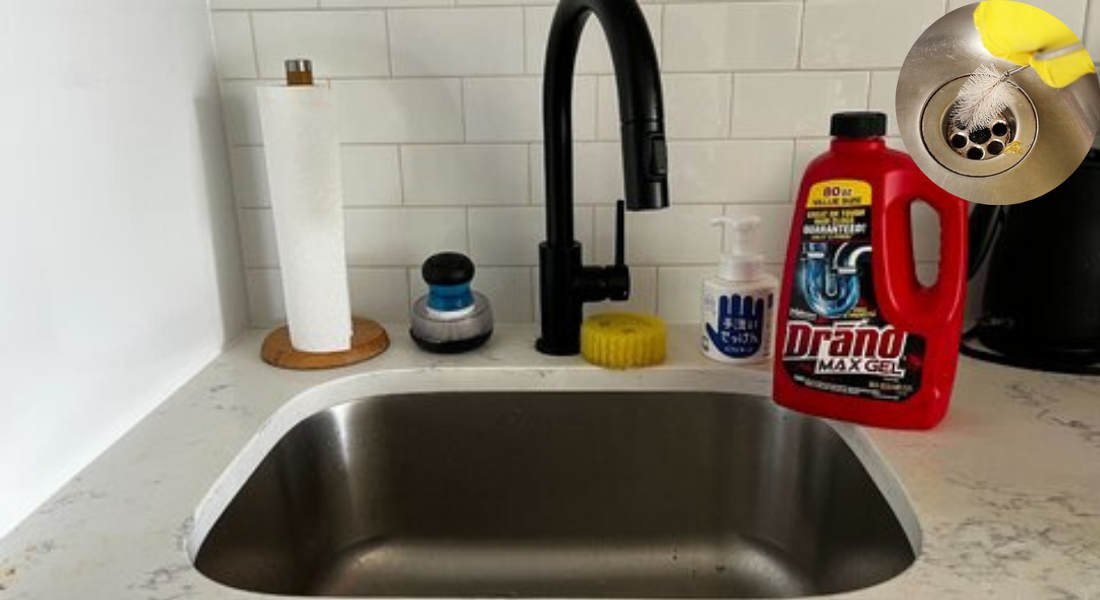
Here’s a quick breakdown of the benefits and drawbacks of using Drano:
Pros Cons
Fast and effective on organic clogs Can damage old or delicate pipes
Easy to use and widely available Not effective on severe blockages
Safe for septic systems Health risks if safety is ignored
Eliminates odors Environmental concerns with chemicals
Safer and Eco-Friendly Alternatives to Drano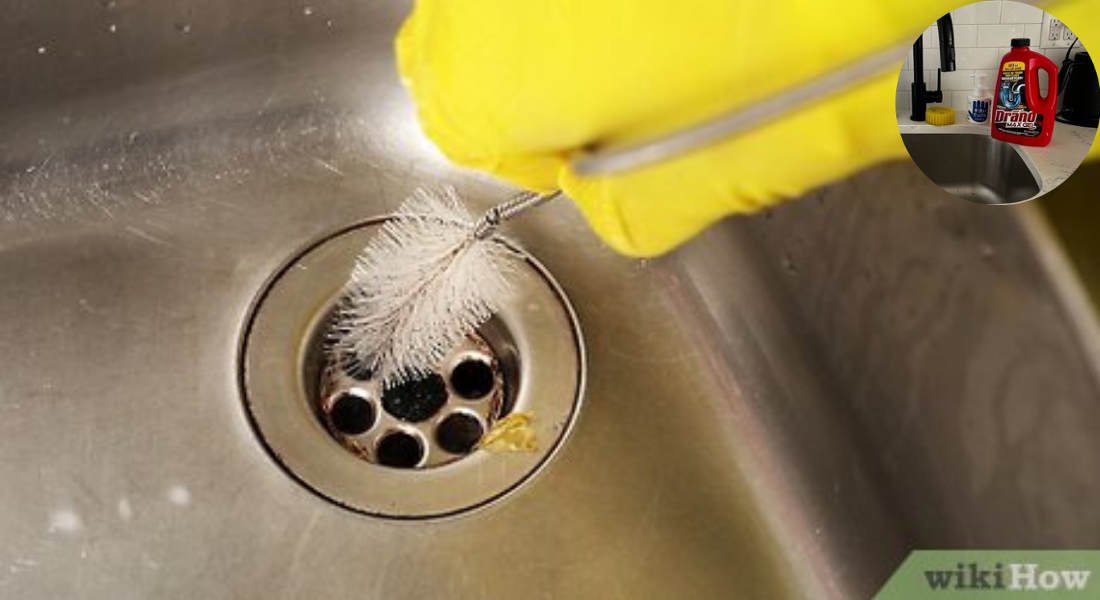
If you’re concerned about the risks of using Drano, consider these safer alternatives:
Natural Solutions
- Baking soda and vinegar: Pour half a cup of baking soda into the drain, followed by half a cup of vinegar. Let it sit for 15 minutes before flushing with hot water.
- Boiling water flushes: Pour boiling water into the drain to dissolve grease and loosen debris.
Mechanical Methods
- Plunger: Use a plunger to create suction and dislodge the clog.
- Drain snake: A drain snake can physically remove clogs without chemicals.
When to Call a Professional
If natural or mechanical methods don’t work, it’s best to call a plumber. Persistent clogs may indicate deeper plumbing issues.
You may also read (the truth about drains in home kitchen faucets).
